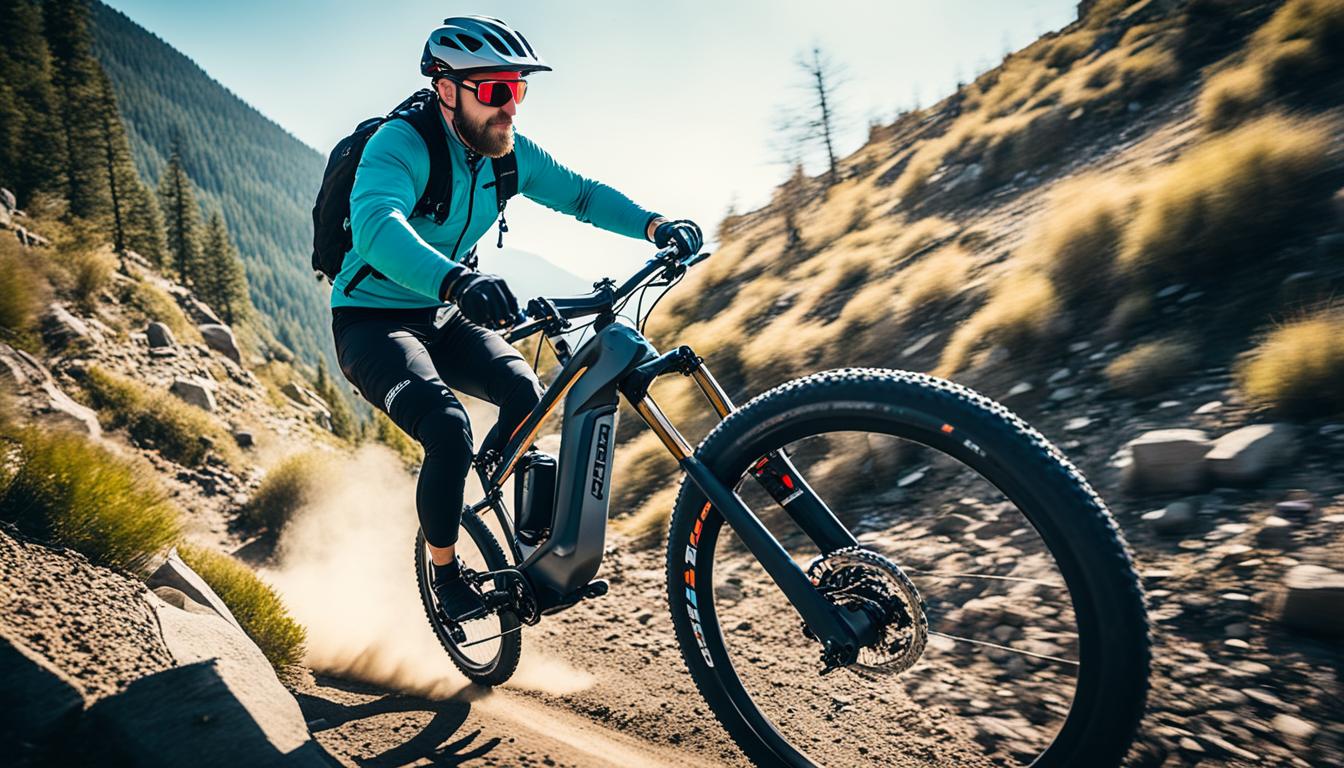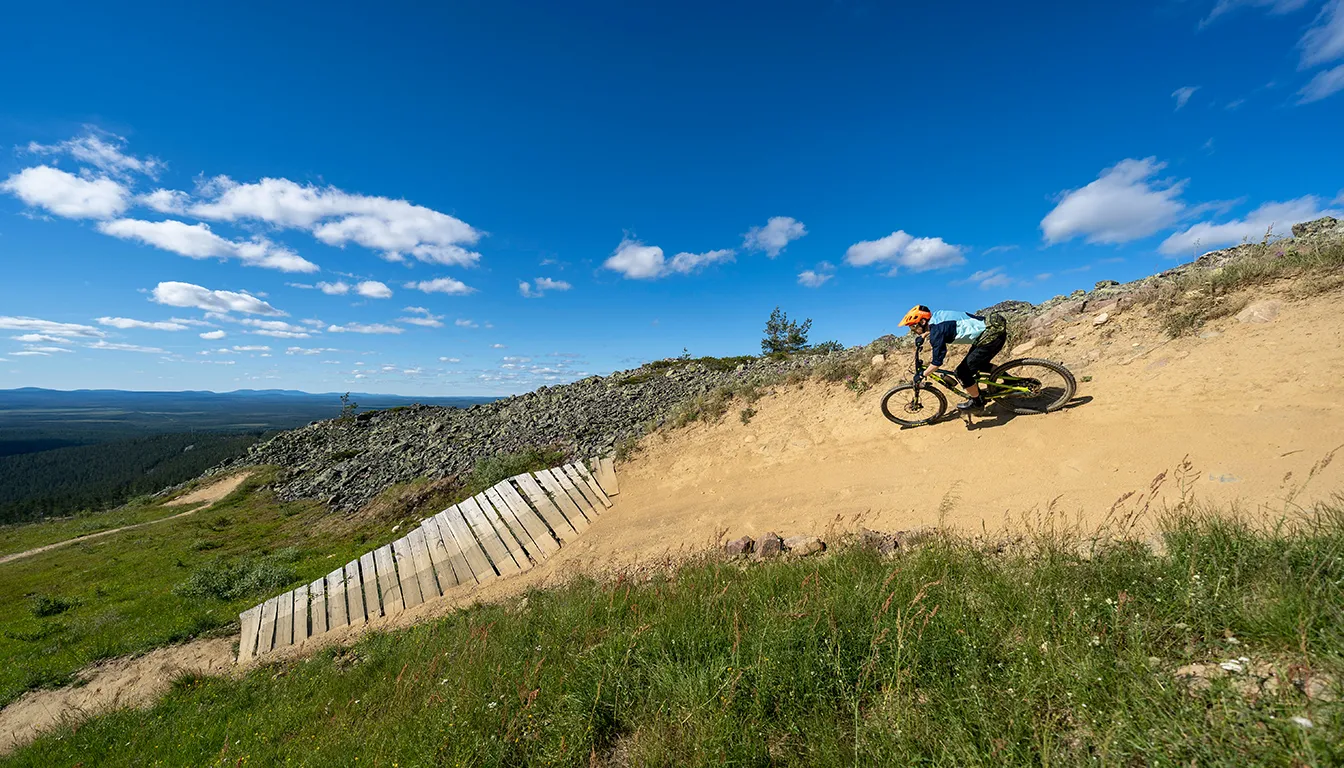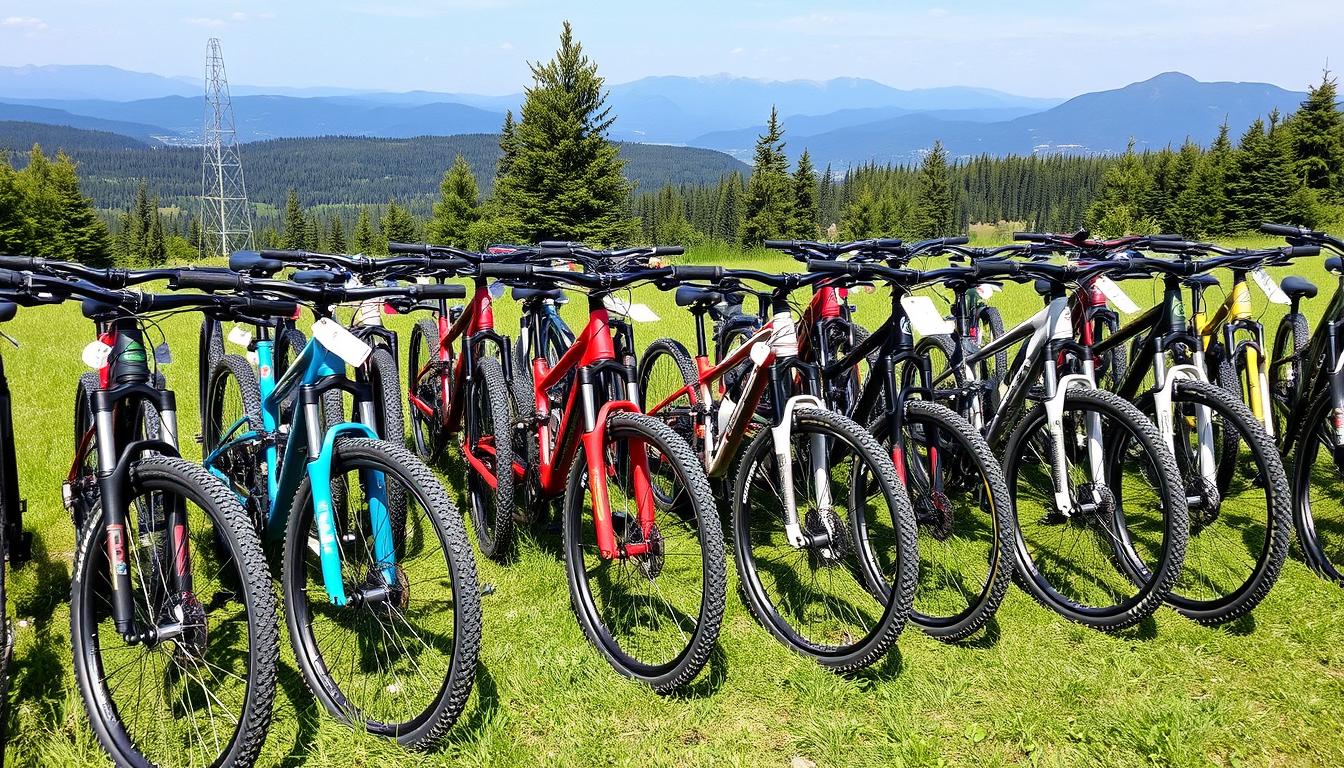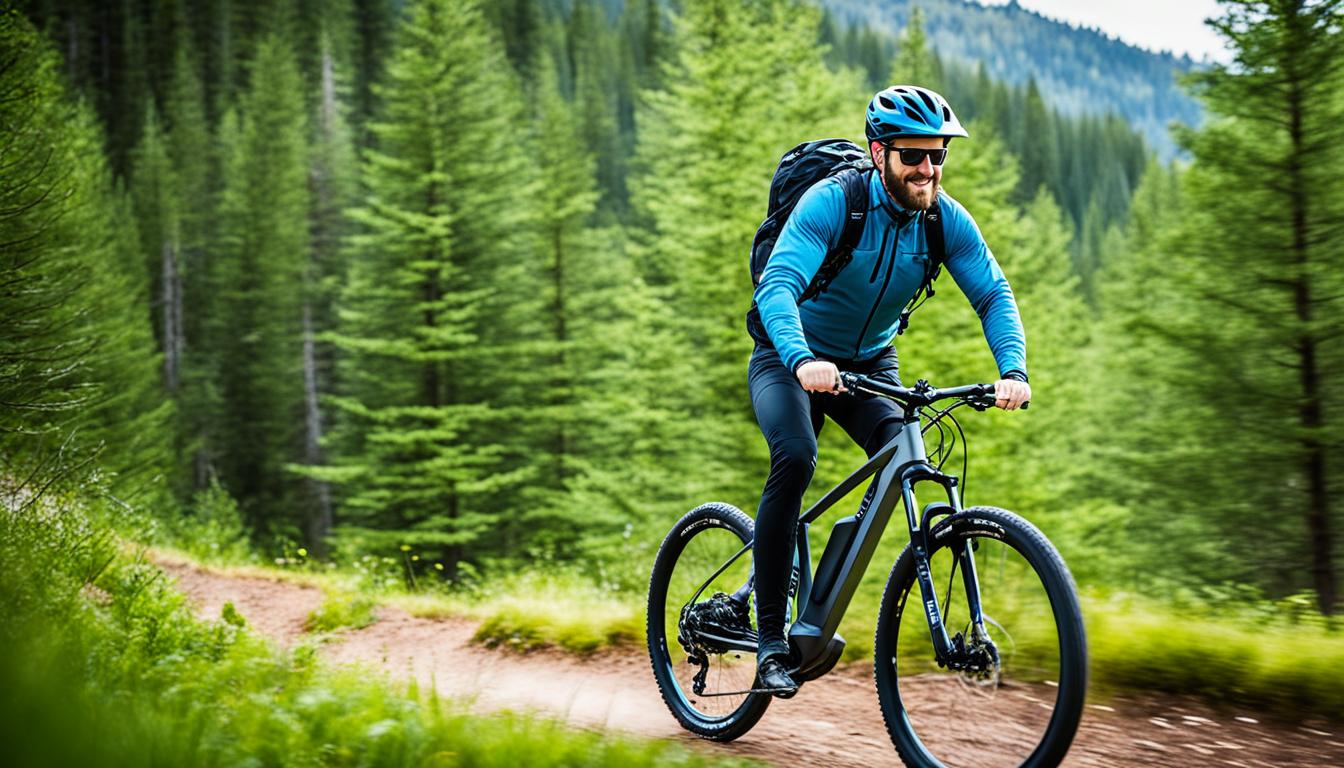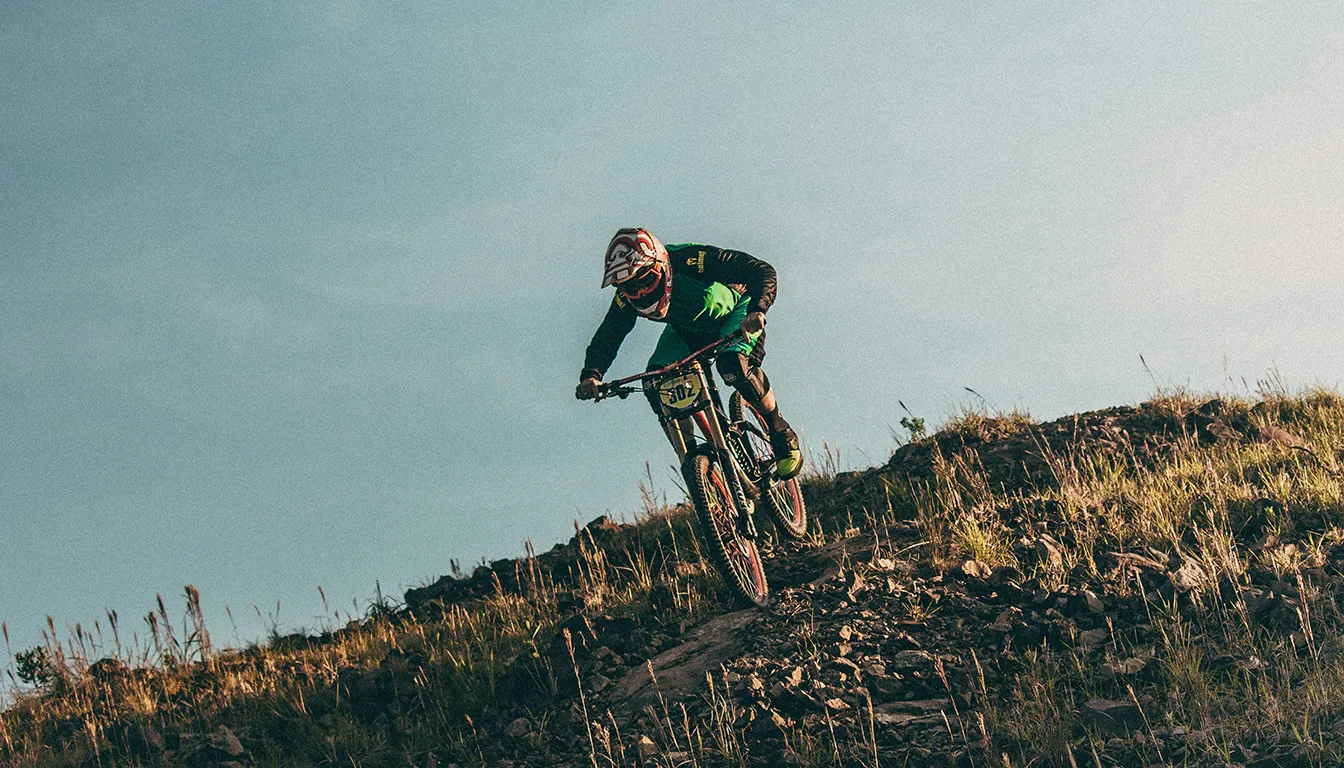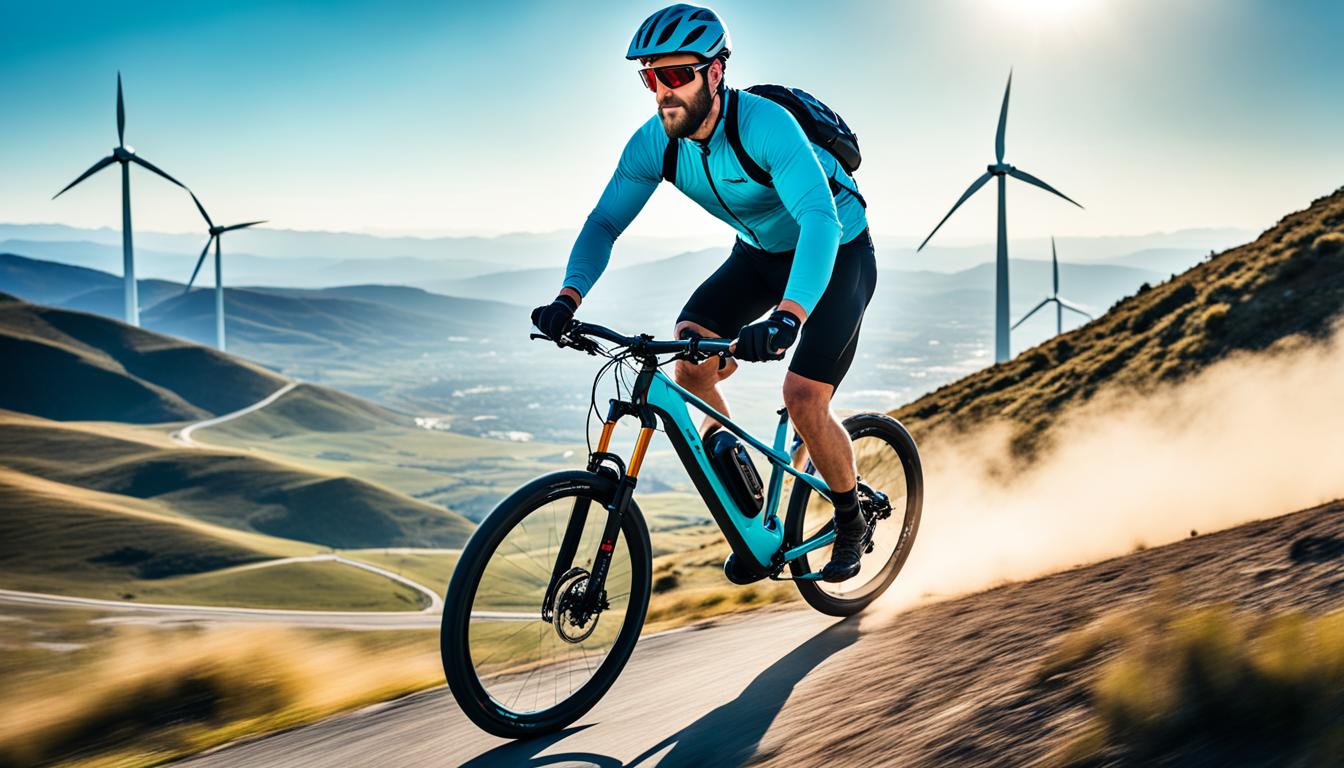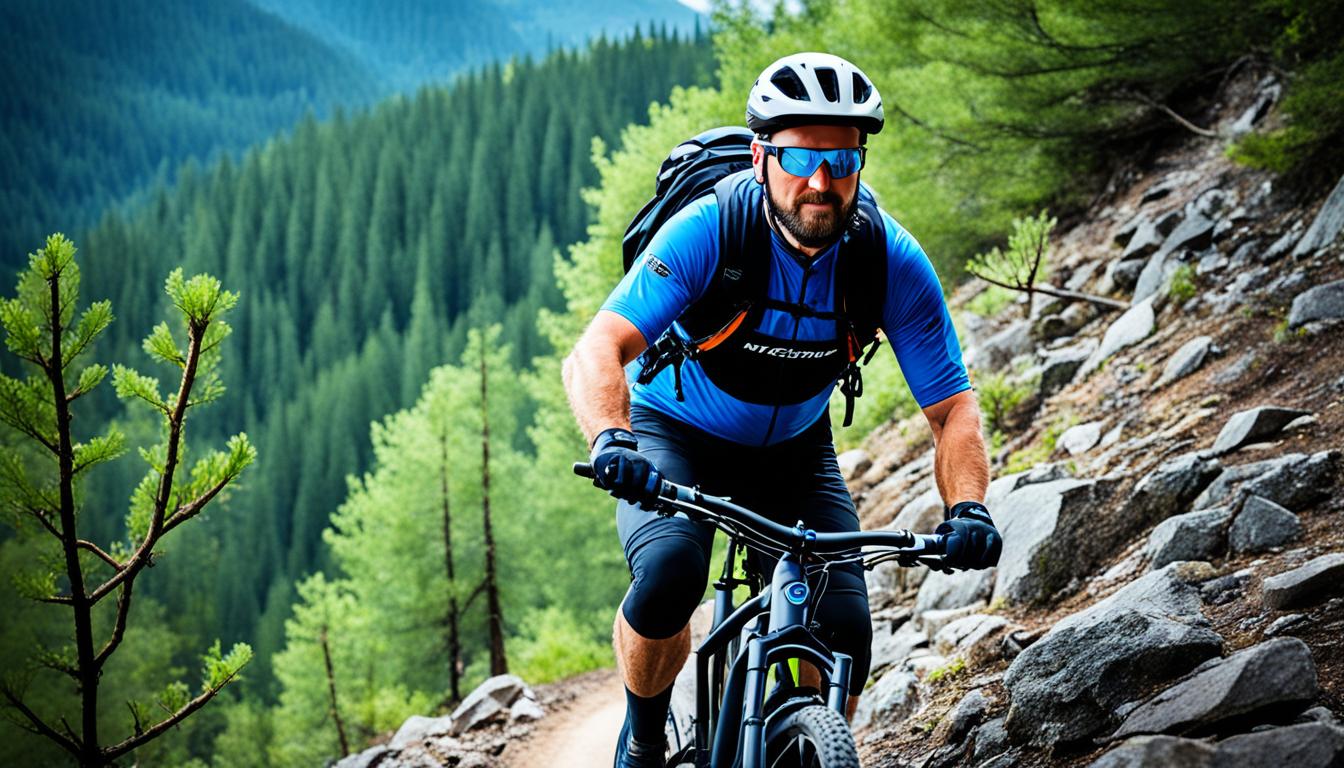Mountain biking is growing fast, and eMTBs are leading this change. Sales of e-bikes shot up by 78% between 2017 and 2018. This shows people love the new experiences these bikes bring, especially on rough terrains. Pedal-assist tech and strong builds mean both new and skilled riders can enjoy the UK’s tough landscapes. They find climbing steep hills and going down tricky slopes easier.
More people want electric mountain biking now. Companies like H+I Adventures offer special tours for e-bike riders. This trend shows riders need the right e-bike setup for mountain biking. A good setup improves performance, safety, and fun. Knowing how to adjust your e-bike and set it up right is key to enjoying different trails.
Making sure your gear is well-kept and fitting it to your comfort is important. Learning basic mountain biking skills is crucial to get the most from your rides. For tips on fine-tuning your setup and advice from skilled riders, click here.
Starting eMTB cycling is an exciting journey of learning and improving skills. For beginners, it’s key to follow expert advice and take it slow. This ensures a safe and fun start, as explained in this guide.
Understanding the E-Bike Systems
Modern e-bikes come with complex systems that make riding better. It’s key for cyclists to understand these to improve on trails. We’ll look into e-bike assist modes and how you can customise your ride, focusing on the popular Shimano EP8 system and Bosch Performance Line CX.
Types of Assist Modes
Different e-bike systems have unique assist modes for certain ride conditions. The Shimano EP8 system offers Eco, Trail, and Boost modes. Eco is great for relaxing rides, making your battery last longer. Trail mixes power with efficiency for varied terrains.
Boost gives you full power, perfect for steep climbs. The Bosch Performance Line CX has its own modes like Walk, Eco Tour+, and Turbo. Walk helps when you’re pushing your bike uphill. Eco Tour+ is for longer rides without using much battery. Turbo gives you all the power you need for tough trails.
Benefits of Custom Tuning
Custom tuning lets riders adjust their e-bike’s performance. With apps like Shimano’s E-Tube and Bosch’s eBike Flow, you can change assist levels and power. This improves power efficiency and makes your ride more comfortable and in control.
If you’re into discovering hidden mountain biking trails, knowing how to tweak these settings can hugely better your experience.
Choosing the Right Components for Performance
Selecting the right components for your e-bike boosts your mountain biking fun. Understand the role of tyres and suspension. These can make handling better and improve how your bike performs on tough terrains.
Importance of Tyres
Fat tyres are key for mountain biking. They give you great grip and stability on rough paths. The wide tyres help your bike grip better, making climbs easier. Riders like them because they keep the bike moving smoothly on steep climbs. You can change the tyre pressure to suit your ride, making it perfect for any hill or trail.
Upgraded Suspension Systems
Suspension systems make your e-bike comfier and easier to control on bumpy trails. A good suspension makes your bike steadier and boosts your confidence on hard climbs. The Cyrusher XF900 shows how great suspension can absorb shocks. This lessens tiredness and makes climbs better. Choosing better suspension means enjoying every ride, up or down.
Best E-Bike Setup for Mountain Biking
Choosing the best setup for e-biking on mountains means knowing about gear ratios and motor design. These factors are key to better efficiency and control when riding on tough trails.
Optimised Gear Ratios
Good e-bike gear ratios help riders keep a steady pedalling speed on hills. This makes switching between different types of ground easy. As a result, biking up steep trails becomes less tiring. Learning about gear ratios is crucial, especially for those ready to face challenging routes. Gear ratio choice is influenced by weight, the terrain, and rider skill level. Modern performance e-bikes have advanced gears for better control and bike reaction. For more information on e-bikes and their gears, visit the best electric mountain bikes review.
Motor Configuration
Motor setup is vital for better hill climbing on performance e-bikes. Choosing a motor to suit your riding style and the terrain impacts how well you perform. Stronger motors with more torque are best for steep climbs. For example, mid-drive motors provide strong support for uphill rides. Top brands like Shimano and Bosch make efficient motors for different biking experiences. It’s important to pick a motor that fits the trails you ride and your climbing needs. This choice will greatly improve your enjoyment and stamina on rides.
Technique: Tips for Efficient Riding
Improving your riding technique can make a big difference on your e-bike. Make sure you keep a steady rhythm while pedalling and adopt the correct posture for every terrain. These efficient riding tips will make your e-bike journey even better. If you still needing more information, this guide will explain how to conserve battery power on an e-bike.
Maintaining Your Pedal Cadence
Keeping a steady pedal cadence is key to getting the most power and staying balanced. Try to keep your pedalling rate between 80 and 90 revolutions per minute for top motor efficiency. Don’t speed up or slow down suddenly. Stay smooth, especially when going up hills.
Adjusting your pedal-assist controls is easy while you’re moving. This lets you pedal faster without working too hard.
Proper Body Positioning
The right way to position your body on an e-bike is very important. It helps you control your bike better on different surfaces. When going uphill, lean forward a bit. This puts more weight on the front wheel, increasing grip. As the ground changes, adjust how you sit or stand on the bike. Lean back when going downhill to stop the front wheel from skidding. It’s crucial to keep your centre of gravity low, especially on rough or slippery paths, for a safer ride.
Conclusion
Getting the best e-bike setup is key for better mountain biking. Knowing about e-bike systems helps riders choose what’s best for them. This includes picking the right tyres and suspension to boost efficiency and last longer.
Also, using the right e-bike riding techniques is important. Keeping a good pedal speed and how you position yourself makes a big difference. In the UK, 76% of city riders like light hardtail e-bikes for their efficiency.
People are encouraged to try both hardtail and full suspension e-bikes. About 64% prefer full suspension for more challenging rides. Trying different setups and riding ways will show your e-bike’s true abilities.
As e-bike tech and preferences change, keeping up with new trends is vital. This ensures you have fun on every ride, whether going uphill or speeding downhill.
FAQ
What is the best e-bike setup for mountain biking?
For mountain biking, the best e-bike setup involves several steps. First, optimise assist modes for your needs. Choose the right components like fat tyres. And, adjust your gear ratios and motor settings for the terrain and your riding style.
How do assist modes work on electric mountain bikes?
Assist modes on bikes like Shimano’s EP8 help by giving power boosts. Eco mode is great for casual rides. For tough climbs, Boost mode is your best friend. It improves your performance on difficult terrains.
Can I customise my e-bike settings for better performance?
Absolutely! With apps like Shimano’s E-Tube, you can adjust assist levels. This fine-tuning allows for better rides on various terrains. It increases your comfort and control.
Why is tyre choice important for mountain biking?
Tyres play a big part in how your bike handles. Fat tyres are best for gripping uneven surfaces. They keep your bike steady and make climbing hills easier.
What role does suspension play in an e-bike?
Good suspension keeps rides comfortable on bumpy trails. It helps you handle difficult climbs better. Bikes like the Cyrusher XF900 show how suspension can enhance biking.
How do I choose the right gear ratios for climbing?
Choosing the right gear ratios makes climbing easier. It lets you keep a steady pedalling rhythm. This is essential for smooth rides up different inclines.
What should I consider when selecting an e-bike motor?
When picking a motor, think about the power you need. Stronger motors are better for steep climbs. Make sure the motor matches your riding style and the places you ride.
How can I maintain my pedalling cadence?
Keeping a consistent pedalling pace is key. Try not to change your rhythm suddenly. A steady cadence helps you stay balanced and use your energy efficiently.
What is the ideal body position for mountain biking?
The right body position boosts your stability. Lean forward a bit on climbs to help with traction. Adjusting your weight for different terrains keeps you in control.
